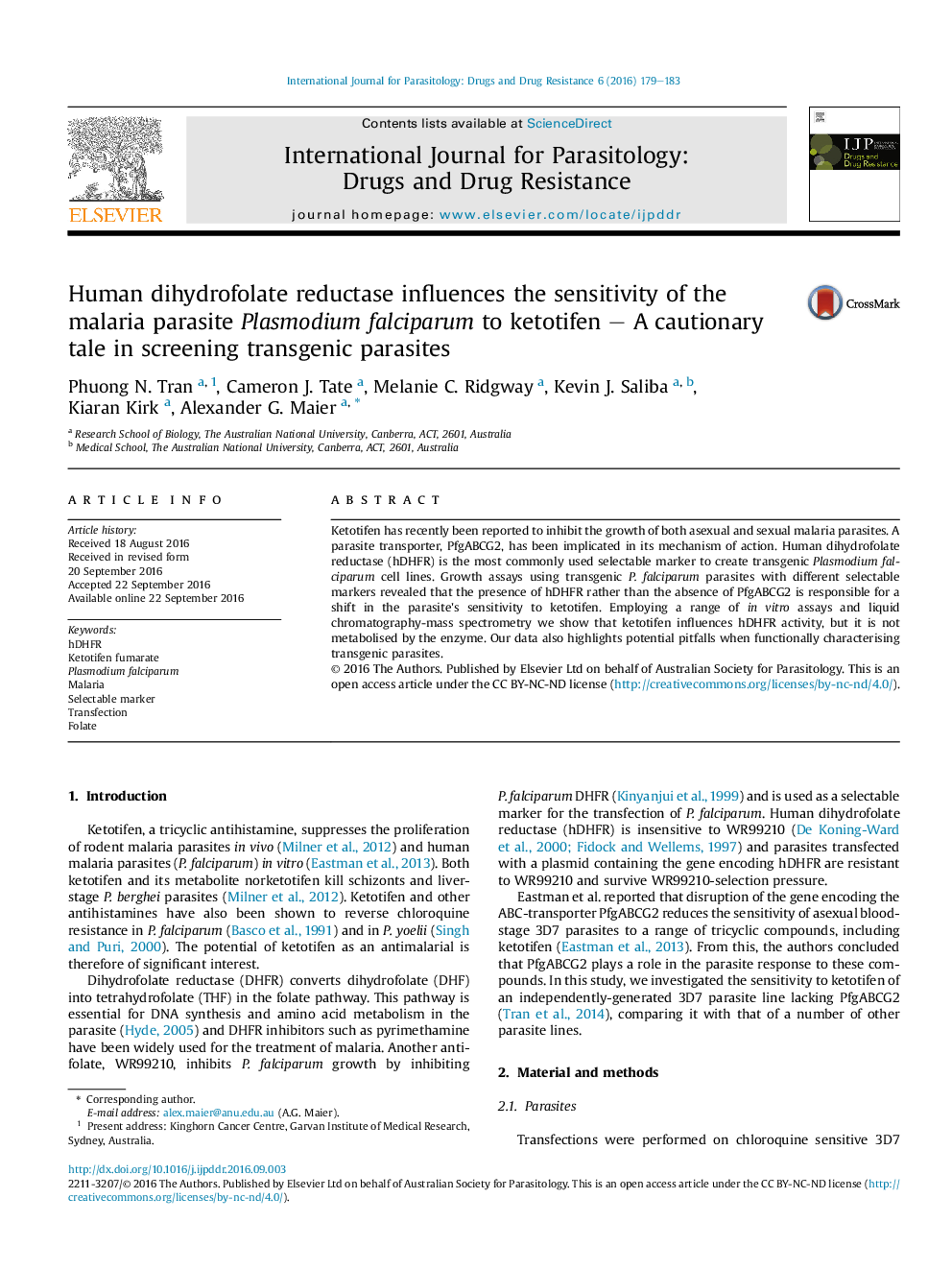| کد مقاله | کد نشریه | سال انتشار | مقاله انگلیسی | نسخه تمام متن |
|---|---|---|---|---|
| 6481757 | 1401036 | 2016 | 5 صفحه PDF | دانلود رایگان |
- The use of hDHFR as selectable marker alters sensitivity of P. falciparum to ketotifen.
- Anti-malarial mechanism of ketotifen is unrelated to expression of parasite gABCG2.
- hDHFR interacts with ketotifen.
- Folate concentration used in P. falciparum culture limits parasite growth in vitro.
Ketotifen has recently been reported to inhibit the growth of both asexual and sexual malaria parasites. A parasite transporter, PfgABCG2, has been implicated in its mechanism of action. Human dihydrofolate reductase (hDHFR) is the most commonly used selectable marker to create transgenic Plasmodium falciparum cell lines. Growth assays using transgenic P. falciparum parasites with different selectable markers revealed that the presence of hDHFR rather than the absence of PfgABCG2 is responsible for a shift in the parasite's sensitivity to ketotifen. Employing a range of in vitro assays and liquid chromatography-mass spectrometry we show that ketotifen influences hDHFR activity, but it is not metabolised by the enzyme. Our data also highlights potential pitfalls when functionally characterising transgenic parasites.
173
Journal: International Journal for Parasitology: Drugs and Drug Resistance - Volume 6, Issue 3, December 2016, Pages 179-183
